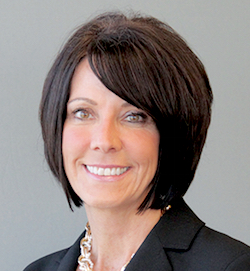
It is no secret that employee turnover is a huge problem in the assisted living world. Although a great deal of attention has been placed on recruitment and getting people “in the front door,” it seems that greater emphasis should be focused on employee retention and “closing the back door.”
Staff turnover rates in assisted living communities have been persistently high for decades, ranging from 50% to 100% depending on the position, with certified nurse assistants being at the high end of the scale. Losing employees negatively affects the bottom line of organizations in a variety of ways, including:
- Decreased quality of care and services,
- Decreased resident satisfaction,
- Loss of census,
- Increased staffing costs and contingent staffing costs,
- Increased recruitment costs,
- Increased absenteeism, and
- Increased injuries/accidents to both residents and employees.
Employee retention must be an ongoing practice, not just a one-time program. In recent years, the focus has shifted toward improved customer service and making the residents and their families the top priority. Why not adapt this customer service shift in mindset and culture and place that same friendly focus on our employees?
This concept can be extremely effective in reducing employee turnover. In short, the best way to keep your employees happy is to treat them as you would clients.
So what does it take to achieve a high level of employee satisfaction? The key to success is to create a workplace culture that is both resident- and employee-focused.
When creating a customer service program, the focus often is on the residents and their families. To create and sustain a culture of service excellence, organizations must have an equal focus on their clients and employees.
Many studies have found a correlation between high employee satisfaction and high resident satisfaction. A simple concept — happy employees lead to happy residents. Further, employee satisfaction directly affects employee retention; happy employees stay.
As with our internal customers, we need to take the time to fully understand our employees’ needs and expectations as well as address their concerns. An employee satisfaction program is more than a “good-feeling” initiative; it is a strategic concept that must start from the top of the organization. Leaders must send a clear message that stresses the importance that all employees provide a valued service to each and every resident.
To enhance employee satisfaction, employees must understand how they contribute to the success of the organization. It is imperative that all employees interpret the values and mission of the organization as well as their specific job descriptions and expectations.
Toward that end, developing standards of behavior will provide the foundation for workplace culture and define the expectations of all employees. Standards of behavior should support the values of the organization and may include key factors such as communication, confidentiality and privacy, teamwork and professionalism. As employees incorporate these standards into their day-to-day interactions, customer satisfaction begins to increase. A smile and positive attitude can go a long way.
Mentoring also is a viable retention tool for both new employees and existing staff. Mentoring provides professional growth benefits that appeal to existing employees and increase their job enjoyment and satisfaction.
And enhancing communication is another critical component. Are all employees encouraged to speak up? Is management accessible to offer support and ensure that employees have the tools and training to support their work? When employees are included in the decision-making process, they feel empowered and make a personal commitment to their jobs. It is important that employees’ needs, ideas and input are valued and recognized.
As you make a concerted effort to get to know the residents and their families in your communities, do the same with your employees. Be sure that anyone in your organization who has direct reports does the same.
Take time to listen and learn about your employees’ interests. Doing so helps build relationships between employees and managers and can have an important effect on employee motivation and engagement. Ask what they need from you. What motivates them? What are their strengths and weaknesses?
Reward and recognize behaviors that promote service excellence. Recognition reinforces desired behaviors and builds relationships and teamwork. Employee recognition is a universal motivator and driver of keeping your employees satisfied and engaged.
These initiatives can be implemented successfully with relatively low cost to the organization; however, the return on investment is tremendous.
Employees play an important role in driving overall organizational performance. Happy employees lead to:
- Decreased turnover and labor expenses,
- Decreased recruitment and retention costs,
- Decreased employee burnout/stress,
- Decreased absenteeism,
- Decreased employee and resident complaints and lawsuits,
- Improved working conditions,
- Better performance and improved quality of care and services,
- Increased resident satisfaction,
- Increased employee engagement, and
- Improved resident and employee safety
If the aforementioned positive outcomes of happy, engaged employees are realized, then the natural side effect is a decrease in work-related injuries. A reduction in absenteeism alone could have a significant effect. Absenteeism has costly consequences when organizations are short-staffed. This leads to employees trying to do more with less, and they are more likely to take shortcuts that lead to accidents. Additionally, when workers are stressed and preoccupied, they are more susceptible to injury.
Sustaining excellence in employee satisfaction and putting a stop to the “revolving door” requires work and focus. Establishing a formal customer service program that focusses on both residents and employees creates a positive workplace culture that improves staff and resident satisfaction.
Marlene “Marty” Butler is senior vice president, practice leader, for Assurance’s senior living and healthcare divisions. Before joining Assurance, she held many different roles within the insurance industry, including claim-handling, underwriting, accounting, marketing, client services and sales. Butler is involved in several industry associations, including the Illinois Health Care Association, LeadingAge, the American Health Care Association/National Center for Assisted Living and Argentum. She may be reached at [email protected].
McKnight’s Senior Living welcomes marketplace columns on subjects of value to the industry. Please see our submission guidelines for more information.




